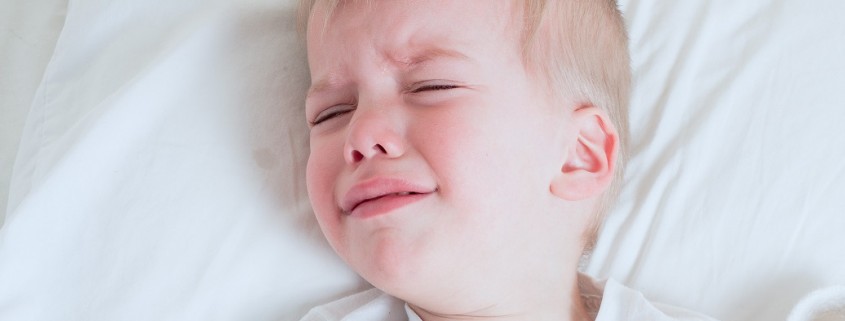Night Terrors in Children (also known as Sleep Terrors)
What are night terrors in children?
Those of you who have witnessed a night terror will know how they came to be named! I witnessed a relative of mine have several of these when he and I were both young and still remember them vividly.
When a night terror starts, your child wakes abruptly from sleep in a terrified, confused state. The child will show physical signs of panic including a fast heart rate, sweating and rapid breathing. Often the child will thrash around, scream, appear very distressed and seem unaware of their surroundings or of your efforts to comfort him. He may not even recognise you and this is because, even though his eyes are open, your child is actually still in a deep sleep state.
These night terror episodes can last up to 40 minutes (but usually less) before the child returns to a restful sleep with no memory of the event the next day. Night terrors appear so frightening however that you as a parent are often left shocked and wide-eyed for considerably longer. It’s important to reassure yourself that night terrors are common and are not at all harmful for your child.
Night terrors sometimes run in families. They occur most often in the 2-7 year age group and more often in boys although can also occur in girls and in older children and even, rarely, in adults. If first starting in teenagers or adults, they can sometimes be a sign of a type of epilepsy called temporal lobe epilepsy. Night terrors seem to occur more frequently when children also have a sleep disorder such as obstructive sleep apnoea.
Night terrors are different from nightmares and not as common. Night terrors are episodes of arousal occurring during ‘deep sleep’ or ‘slow wave sleep’. Because we get most of our deep sleep early in the night, night terrors generally occur during the first third of the night. In contrast, nightmares occur during rapid eye movement sleep (REM sleep or ‘dream sleep’) much later – generally in the early hours of the morning.
There are a few things which seem to sometimes trigger night terrors – high fevers, being overtired and emotional stress on the previous day. These might be areas that you can look at to reduce the likelihood of another night terror. Night terrors don’t normally require further investigation or treatment though and there is no association between childhood night terrors and future mental health problems. Most often kids simply grow out of them as their sleep develops and matures.
What you can do about your child’s night terrors
Because your child is still asleep during a night terror, it’s best to avoid waking them up but to still ensure their safety. Some children will run out of their beds during an episode so you’ll need to make sure that they don’t inadvertently hurt themselves by bumping into things. Just gently guide your child back towards his bed, tuck him in, reassure and comfort him and he will soon settle back to sleep. If your child won’t let you comfort him, be sure to still sit nearby to soothe him with your words and presence while making sure he remains safe. If a child is woken during a night terror, he may take longer to settle as he will wake disorientated and confused.
If your child’s night terrors are occurring frequently and at the same time each night and you’ve tried addressing possible triggers, it might be worth trying ‘scheduled awakening’ – waking your child 15-30 minutes before you’re expecting an episode. Keeping your little one awake for a few minutes for a quiet chat, song or drink of water before allowing him to go back to sleep may help to disrupt your child’s sleep cycle enough to prevent another night terror. As always though, if you’re at all concerned about your child’s night terrors, seek professional advice.
*For simplicity, children are referred to using masculine pronouns (‘he’/‘his’) in this article, although the information equally applies to girls.
Dr Kaylene Henderson is passionate about sharing practical, research based advice to help you feel more calm and confident while raising kind, resilient and socially and emotionally healthy children.
And here for the corresponding course series for early childhood professionals, Raising Good Kids: Managing Behaviour and Emotions in Early Childhood Care and Education Settings.
References:
Kaplan BJ, Kaplan VA. Kaplan and Sadock’s Synopsis of Psychiatry: Behavioral Sciences/Clinical Psychiatry. 9th ed. Philadelphia, Pa: Lippincott Williams & Wilkins; 2003:775.
Kuhn, B.R., & Elliott, A.J. (2003). Treatment efficacy in behavioral pediatric sleep medicine. Journal of Psychosomatic Research, 54, 587-597




